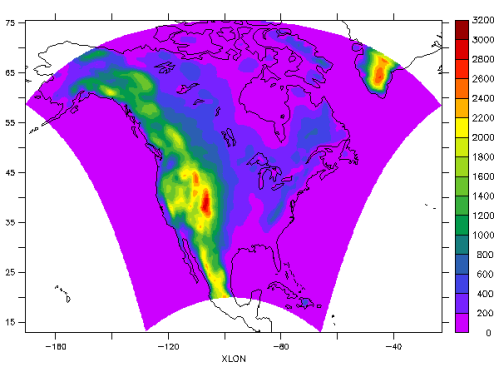
| North American Regional Climate Change Assessment Program |
| About NARCCAP |

About the ProgramThe North American Regional Climate Change Assessment Program (NARCCAP) is an international program to produce high resolution climate change simulations in order to investigate uncertainties in regional scale projections of future climate and generate climate change scenarios for use in impacts research. NARCCAP modelers are running a set of regional climate models (RCMs) driven by a set of atmosphere-ocean general circulation models (AOGCMs) over a domain covering the conterminous United States and most of Canada. The AOGCMs have been forced with the SRES A2 emissions scenario for the 21st century. Simulations with these models were also produced for the current (historical) period. The RCMs are nested within the AOGCMs for the current period 1971-2000 and for the future period 2041-2070. As a preliminary step to evaluate the performance of the RCMs over North America, the RCMS are driven with NCEP Reanalysis II data for the period 1979-2004. All the RCMs are run at a spatial resolution of 50 km. RCM Characteristics — AOGCM Characteristics — RCM/GCM combinations. NARCCAP also includes two timeslice experiments at 50 km resolution using the GFDL atmospheric model (AM2.1) and the NCAR CCSM atmospheric model (CAM3). In a timeslice experiment, the atmospheric component of an AOGCM is run using observed sea surface temperatures and sea ice boundaries for the historical run, and those same observations combined with perturbations from the future AOGCM for the scenario run. Omitting the coupled ocean model saves considerable computation and allows the atmospheric model to be run at higher resolution. Becoming a UserClick here to provide your contact information and a brief description of your research.About UsersWe envision three main types of NARCCAP users:
More Information
|





